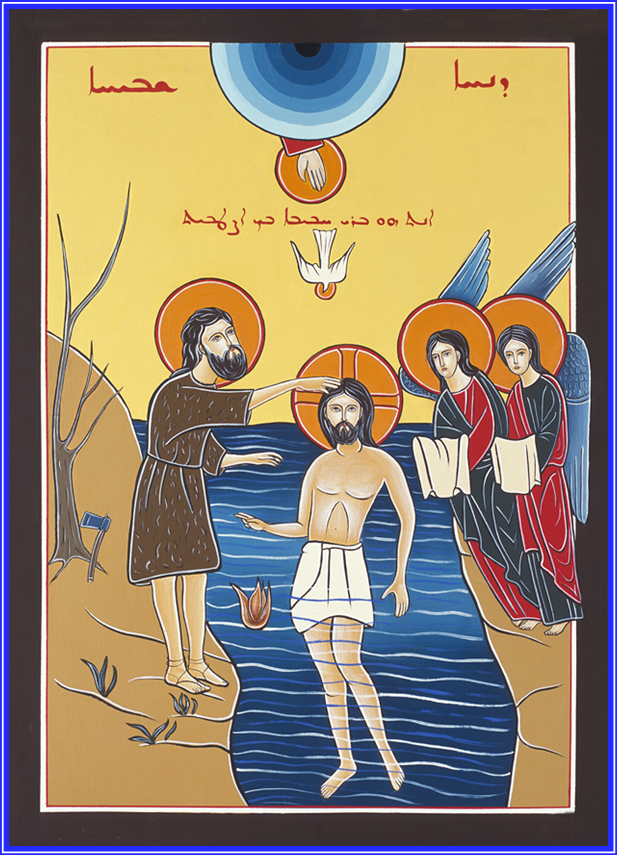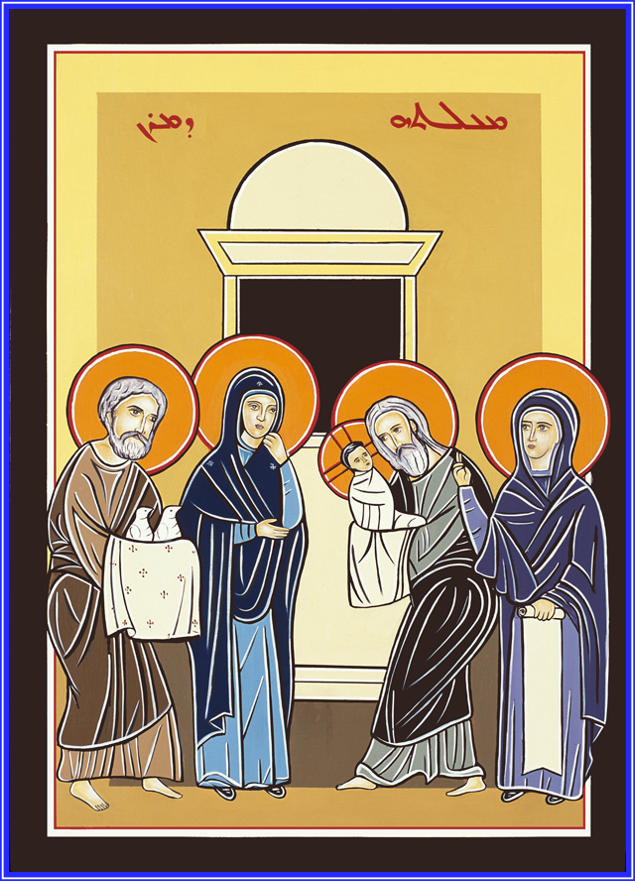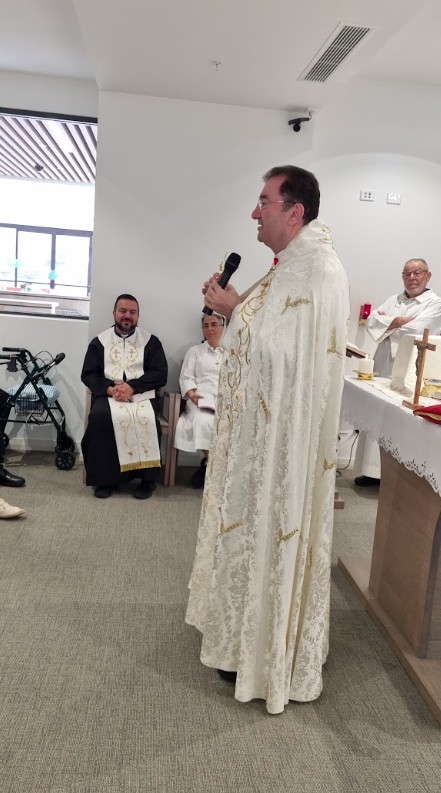By Gabriel Khaicy
“After this I looked, and behold, a great multitude that no one could number, from every nation, from all tribes and peoples and languages, standing before the throne and before the Lamb, clothed in white robes, with palm branches in their hands” (Revelation 9:7).
When we consider the mystery of our baptism, it can seem a strange thing that happened in the distant past.
Most of us were too young to remember being taken to the church, anointed with oil, baptised with water, and clothed in a white garment. What does it all mean?
We are in the season of the Epiphany now, celebrating Our Lord’s baptism in the Jordan. It is a good time to try and understand the gift of baptism which we have been given.
It can help to start with the word “baptism” itself. It comes from a Greek word meaning “to dip,” as in “to immerse” or “to wash.” Immersion in water especially, where someone’s head goes under the water, gives rise to a few natural symbols.
First, when each of us took our first breath, we came into the world through water—the water of our mother’s womb. When the priest blesses the baptismal water, he prays to the Father saying, “He [Jesus] sanctified baptism for us, and made of it a pure and miraculous womb.”
Second, the baptismal “dipping” starts with a descent into water as a type of death. It ends with the baptised person rising out from the water, a symbol of rising from the dead, of resurrection.
It is important to understand that when we talk about symbols, like baptism being a womb, we are not just talking about concepts. Looking at baptism with Syriac eyes, we see it really is a womb: from it, we are born again, “of water and Spirit” (see John 3:1-6).
Likewise, it is a resurrection: rising from the water we are born into new life in Christ. We might even ask which birth is more real, natural birth, or spiritual birth in baptism?
Now, what of the white robe?
When the newly baptised is dressed in a white baptismal robe, the priest makes an announcement, part of which is: “you have accepted the robe of glory which Adam had discarded.”
St Ephrem, whose feast we celebrate on the 28 of January, gives us a way of understanding the “robe of glory,” and how and why it is received at baptism.
St Ephrem described Adam and Eve as having been clothed in a robe of glory—a garment of light —when they were in Eden. They were created in a state of “original holiness,” as the Catechism puts it. They then lost this holiness because of their sin.
To give man a way to regain holiness, “Christ came to bless the waters [at the Jordan] to give new life” (Maronite Liturgy for the Epiphany). It seems that, in the beginning, there was an intrinsic holiness in all creation, but it was marred by Adam’s sin.
Now, because of Christ’s baptism, “waters have [again] been sanctified” (Maronite Liturgy). Water can now be used in baptism to effect sanctification.
St Paul, writing to the Galatians says, “as many of you as have been baptised into Christ have put on Christ” (Galatians 3:27). So, by baptism, we “put on Christ.” But what does it mean to “put on Christ?”
We now have the (true) symbol of the robe of glory to help us understand St Paul: Christ is our holiness.
An anonymous Syriac Epiphany hymn, written around the sixth century, reads, “Jesus is mine, and I am His. He has desired me: He has clothed himself in me, and I am clothed in him” (from Treasure-house of Mysteries by Sebastian Brock).
But “putting on Christ” does not end at baptism.
Brock, explaining the Syriac tradition, likens baptism to betrothal.
It will be at the eschaton, the end of time, where the actual wedding feast will be celebrated. That means, until then, each of us has a work we need to do. We must desire Christ and seek him wholeheartedly.
Let us appreciate the gift of baptism which we have been given and make ourselves ready for the wedding feast of the Lamb.
“Let us rejoice and exult and give him the glory, for the marriage of the Lamb has come, and his bride has made herself ready” (Revelation 19:7-8).
Gabriel Khaicy is a seminarian of the Maronite Eparchy of Australia, New Zealand and Oceania.
Image Credit: Icon of the Epiphany by Fr Abdo Badwi.



